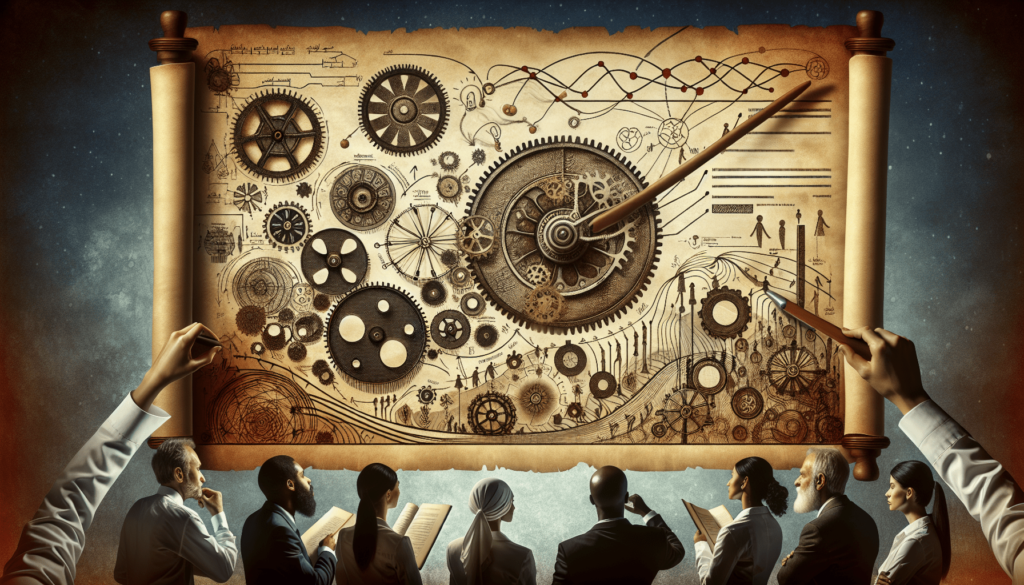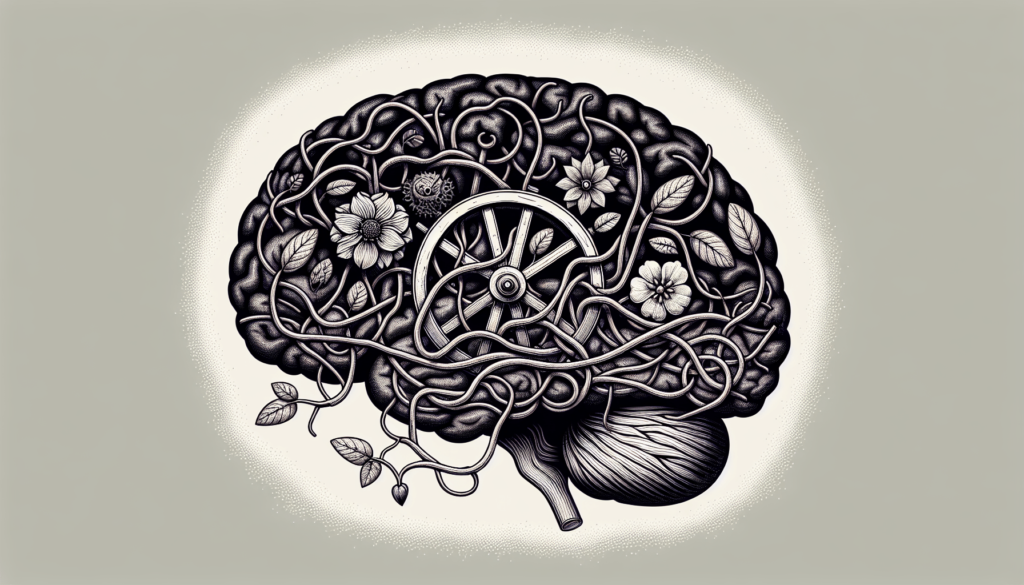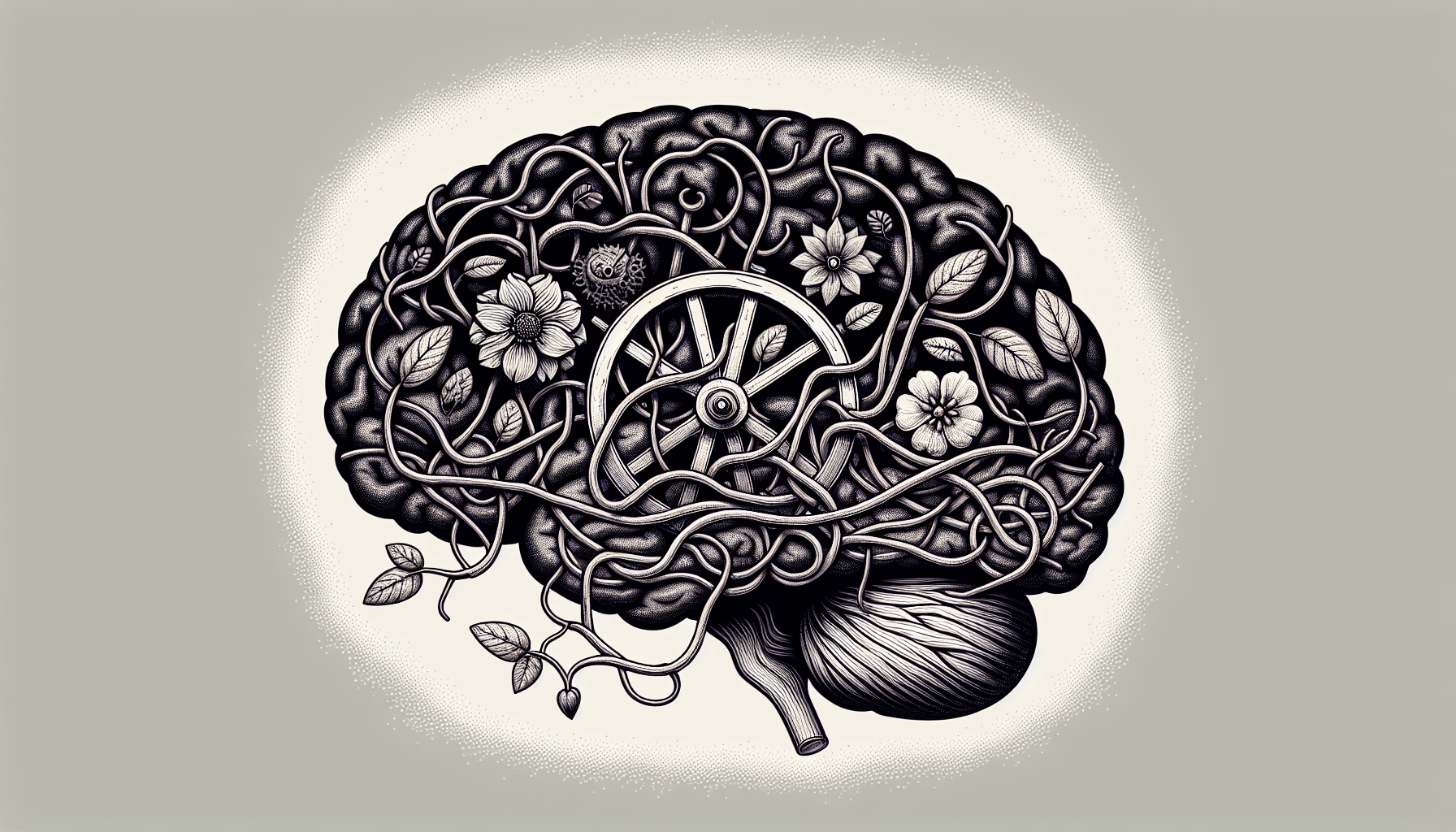The History And Philosophy Behind Major Motivational Theories
Have you ever wondered about the origins and underlying beliefs of major motivational theories? In this article, we will take a captivating journey through the history and philosophy behind these theories. Delving into the minds of influential thinkers, we will explore how their ideas shaped our understanding of motivation and continue to impact our lives today. From Maslow’s hierarchy of needs to Herzberg’s two-factor theory, prepare to uncover the rich tapestry of knowledge that has paved the way for modern motivational practices. So, grab a cup of coffee and get ready to embark on an enlightening exploration of motivational theories!

Early Philosophical Influences
Aristotle’s Theory of Virtue
Aristotle, a Greek philosopher, developed the theory of virtue as a guiding principle for human behavior. According to Aristotle, virtues are qualities that lead to a balanced and fulfilling life. He believed that the key to happiness and well-being lies in achieving eudaimonia, which can be translated as “flourishing” or “living life to the fullest.” In Aristotle’s view, virtues are developed through practice and habituation. By consistently acting in ways that align with virtuous qualities such as courage, wisdom, and kindness, individuals can cultivate a virtuous character.
Epicureanism and Hedonism
Epicureanism, founded by the philosopher Epicurus, centered around the pursuit of pleasure and the avoidance of pain. However, contrary to popular misconceptions, Epicurus believed that true pleasure comes from avoiding excess and leading a simple life. He emphasized the importance of friendship, knowledge, and tranquility in attaining a pleasurable existence. This philosophy sought to liberate individuals from unnecessary desires and external pressures, allowing them to find contentment and happiness in the present moment.
Stoicism and the Pursuit of Virtue
Stoicism, another Greek philosophy, placed great importance on the pursuit of virtue and the development of a strong moral character. Prominent stoic philosophers, such as Epictetus and Marcus Aurelius, believed that individuals have control over their attitudes and reactions to external circumstances, even in the face of adversity. Stoicism teaches self-discipline, resilience, and acceptance of the things that cannot be changed. By focusing on personal virtue and developing an inner sense of peace, individuals can find fulfillment and happiness regardless of their external circumstances.
Psychoanalysis and the Unconscious Mind
Sigmund Freud’s Psychoanalytic Theory
Sigmund Freud, the founder of psychoanalysis, revolutionized the field of psychology with his theories about the unconscious mind. According to Freud, our behaviors and motivations are deeply influenced by unconscious desires and conflicts. He explored the three levels of consciousness – the conscious, preconscious, and unconscious – and argued that much of our psychological processes occur below the level of awareness. Freud believed that unresolved conflicts from early childhood experiences can shape our motivations and behaviors throughout our lives.
The Role of the Unconscious Mind
Freud’s emphasis on the unconscious mind highlighted the importance of uncovering and resolving unconscious conflicts in order to achieve personal growth and psychological well-being. He believed that bringing unconscious motivations into conscious awareness through techniques such as dream analysis and free association could lead to a better understanding of oneself and the underlying causes of psychological issues. By exploring the unconscious mind, individuals can gain insight into their motivations, fears, and desires, thus empowering them to make positive changes in their lives.
Behaviorism and Conditioning
Ivan Pavlov and Classical Conditioning
Ivan Pavlov’s experiments with dogs laid the foundation for classical conditioning, a behaviorist theory of learning. Pavlov demonstrated that by associating a neutral stimulus, such as a ringing bell, with a conditioned stimulus, such as food, dogs could be trained to salivate at the sound of the bell alone. This process, known as classical conditioning, showed that behaviors could be learned through the association of stimuli. Pavlov’s research had a profound impact on understanding how behaviors are acquired and how external factors influence motivation.
B.F. Skinner and Operant Conditioning
B.F. Skinner expanded on Pavlov’s work and developed the theory of operant conditioning. Skinner believed that behavior is shaped by its consequences, specifically through reinforcement and punishment. He argued that behaviors that are followed by positive outcomes are more likely to be repeated, while behaviors that result in negative outcomes are less likely to be repeated. Skinner’s experiments with rats and pigeons demonstrated how behaviors can be shaped and motivated through reinforcement schedules, thus providing further insight into the role of external factors in motivation.
Humanistic Psychology and Self-Actualization
Carl Rogers and Person-Centered Therapy
Carl Rogers, a humanistic psychologist, emphasized the importance of the individual’s subjective experience and self-perception. Rogers believed that individuals possess an innate drive towards self-actualization, which refers to the realization of one’s full potential and the pursuit of authentic self-expression. In his person-centered therapy, Rogers focused on creating a supportive and accepting environment that allowed individuals to explore and develop their self-concept. By fostering an environment of empathy and unconditional positive regard, Rogers believed that individuals could gain greater self-awareness and improve their overall well-being.
Abraham Maslow’s Hierarchy of Needs
Abraham Maslow proposed the hierarchy of needs, a framework that outlines the different levels of human needs and motivations. Maslow argued that individuals must satisfy their basic physiological and safety needs before they can pursue higher-level needs such as love, self-esteem, and self-actualization. According to Maslow’s theory, self-actualization is the pinnacle of human motivation, representing the fulfillment of one’s potential and the achievement of personal growth. Maslow’s hierarchy of needs provided a valuable framework for understanding how different factors motivate individuals at various stages of their lives.
Self-Actualization and Fulfillment
Self-actualization, as proposed by both Carl Rogers and Abraham Maslow, is the ultimate goal of human motivation. It involves the realization of one’s unique talents, passions, and values, leading to a sense of fulfillment and personal satisfaction. Self-actualized individuals are characterized by their authenticity, creativity, and ability to live in the present moment. Achieving self-actualization requires a deep understanding of oneself, continuous personal growth, and the alignment of one’s actions with their core values.

Cognitive Theories and Motivation
Cognitive Evaluation Theory
Cognitive evaluation theory, developed by Richard Ryan and Edward Deci, focuses on how different types of motivation affect individuals’ perception of competence and autonomy. According to this theory, intrinsic motivation, which comes from within, fosters a sense of autonomy and a belief in one’s abilities. On the other hand, extrinsic motivation, driven by external rewards or pressures, can undermine individuals’ sense of competence and autonomy. Cognitive evaluation theory suggests that providing opportunities for intrinsic motivation can enhance individuals’ overall motivation and engagement.
Expectancy Theory
Expectancy theory, proposed by Victor Vroom, emphasizes the role of expectations and beliefs in motivation. This theory suggests that individuals are motivated to act in ways that they believe will lead to desirable outcomes. According to Vroom, motivation is influenced by three key factors: expectancy, instrumentality, and valence. Expectancy refers to the belief that effort will lead to successful performance, instrumentality involves the perception that successful performance will result in desired outcomes, and valence relates to the personal value placed on those outcomes. When these factors align, individuals are more likely to be motivated to pursue their goals.
Goal-Setting Theory
Goal-setting theory, developed by Edwin Locke and Gary Latham, highlights the importance of setting specific and challenging goals in motivating individuals. According to this theory, clear goals provide direction and focus, while challenging goals stimulate individuals to exert additional effort. By setting goals that are specific, measurable, achievable, relevant, and time-bound (SMART), individuals can enhance their motivation, improve performance, and increase their likelihood of success. Goal-setting theory emphasizes the importance of feedback and self-reflection in the pursuit of goals.
Social Cognitive Theory and Observational Learning
Albert Bandura’s Social Cognitive Theory
Albert Bandura’s social cognitive theory expands on traditional behaviorist principles by emphasizing the role of cognitive processes, observational learning, and self-efficacy. Bandura argued that individuals learn by observing others and that their behavior is influenced by their perceptions of the consequences of their actions. This theory suggests that individuals are more likely to engage in behaviors that they believe they can successfully perform and that will lead to positive outcomes. Bandura’s social cognitive theory highlights the importance of self-efficacy in motivation, as individuals’ beliefs in their own abilities can significantly impact their motivation and performance.
The Role of Observational Learning
Observational learning, a key component of social cognitive theory, suggests that individuals learn by observing others’ behaviors and the consequences that follow. Through this process, individuals acquire new behaviors, attitudes, and motivations. Observational learning expands the scope of motivation beyond simple environmental factors by recognizing the influence of social models and the power of vicarious reinforcement and punishment. Individuals can be motivated by observing others who are rewarded for specific behaviors, leading to an increase in their own motivation to engage in similar behaviors.
Intrinsic and Extrinsic Motivation
Motivation Types Defined
Intrinsic and extrinsic motivation represent two distinct types of motivation that influence individuals’ thoughts, feelings, and behaviors. Intrinsic motivation refers to engaging in an activity purely for the enjoyment, satisfaction, or personal fulfillment it brings. This type of motivation is driven by internal factors such as curiosity, mastery, and personal interest. Extrinsic motivation, on the other hand, involves engaging in an activity to attain external rewards or avoid punishment. Extrinsic motivation is driven by external factors, such as praise, money, or recognition.
Intrinsic Motivation: Self-Determination Theory
Self-Determination Theory (SDT), developed by Edward Deci and Richard Ryan, emphasizes the role of intrinsic motivation in fostering personal growth and well-being. According to SDT, individuals have innate psychological needs for autonomy, competence, and relatedness. When these needs are satisfied, individuals experience greater intrinsic motivation, leading to increased engagement, satisfaction, and well-being. SDT suggests that creating environments that support autonomy, provide opportunities for competence, and foster positive relationships can enhance individuals’ intrinsic motivation.
Extrinsic Motivation: Reinforcement Theory
Reinforcement theory, rooted in behaviorism, focuses on how external rewards or punishments influence individuals’ behavior and motivation. According to reinforcement theory, behaviors that are rewarded are more likely to be repeated, while behaviors that are punished are less likely to recur. This theory suggests that external reinforcement can be used to shape and motivate desired behaviors. However, reinforcement theory also acknowledges the potential drawbacks of over-reliance on external rewards and the importance of intrinsic motivation in fostering long-term motivation and sustainable behavior change.
The Role of Emotion in Motivation
Emotion and Motivation: James-Lange Theory
The James-Lange theory of emotion suggests that emotions are a direct result of physiological responses to external stimuli. According to this theory, individuals experience emotions only after perceiving physiological changes in their bodies. In the context of motivation, the James-Lange theory suggests that emotions can influence individuals’ motivation by shaping their perceptions of the situation and their physiological arousal. For example, feelings of excitement and anticipation can enhance motivation, while feelings of fear or anxiety can hinder motivation.
The Role of Emotion in Motivation
Emotions play a crucial role in motivating individuals by providing them with the energy and drive to pursue their goals and aspirations. Positive emotions, such as joy, enthusiasm, and inspiration, can enhance motivation by increasing individuals’ optimism, energy levels, and willingness to take on challenges. On the other hand, negative emotions, such as fear, frustration, and disappointment, can diminish motivation by creating feelings of doubt, stress, and apathy. Understanding the role of emotions in motivation can help individuals harness positive emotions and manage negative emotions to optimize their motivation and performance.
Self-Determination Theory
Self-Determination Theory (SDT) posits that motivation is influenced by three innate psychological needs: autonomy, competence, and relatedness. Autonomy refers to the need to feel in control of one’s own actions and choices. Competence involves the need to feel capable, effective, and masterful in one’s pursuits. Relatedness relates to the need for meaningful connections and positive relationships with others. When these needs are satisfied, individuals experience greater intrinsic motivation, leading to higher levels of engagement, well-being, and personal growth.
The Impact of Culture on Motivation
Cultural Differences in Motivation
Motivation is influenced by cultural values, beliefs, and norms, leading to variations in motivational orientations across different cultures. Some cultures prioritize individual achievement and self-expression, fostering a stronger emphasis on personal goals and intrinsic motivation. In contrast, collectivist cultures place greater importance on social cohesion, cooperation, and fulfilling communal expectations, resulting in a more pronounced focus on external rewards and extrinsic motivation. Understanding cultural differences in motivation is crucial for effectively understanding, supporting, and motivating individuals from diverse cultural backgrounds.
Collectivism vs. Individualism
The distinction between collectivism and individualism plays a significant role in shaping motivational orientations. Collectivist cultures prioritize group goals, interdependence, and harmony within the community. In collectivist societies, individuals may be motivated by social approval, loyalty to their families or communities, and the fulfillment of communal obligations. On the other hand, individualistic cultures emphasize personal goals, autonomy, and independence. In individualistic societies, individuals may be driven by personal achievement, self-expression, and the pursuit of individual happiness and fulfillment.
The Role of Culture in Motivation
Culture acts as a lens through which individuals perceive, interpret, and respond to motivational cues in their environment. Cultural values and norms shape individuals’ expectations, motivations, and priorities, influencing their drive to engage in certain behaviors. For example, in cultures where education is highly valued, individuals may be motivated to pursue academic success and invest effort in their studies. Recognizing and understanding the role of culture in motivation is crucial for creating inclusive environments, tailoring motivation strategies, and fostering cross-cultural understanding.
Contemporary Perspectives on Motivation
Positive Psychology and Motivation
Positive psychology, pioneered by Martin Seligman, focuses on the study of human strengths, well-being, and optimal functioning. In the context of motivation, positive psychology seeks to identify the factors that contribute to individuals’ motivation, engagement, and flourishing. Positive psychologists emphasize the importance of positive emotions, such as gratitude, optimism, and resilience, in enhancing motivation and well-being. By cultivating positive emotions and leveraging one’s strengths, individuals can enhance their motivation and overall quality of life.
Self-Determination Theory: Deci and Ryan
Self-Determination Theory (SDT), developed by Edward Deci and Richard Ryan, emphasizes the role of intrinsic motivation, autonomy, and psychological needs in fostering motivation and well-being. SDT posits that individuals have a natural tendency towards personal growth and self-actualization, which can be enhanced by satisfying their psychological needs for autonomy, competence, and relatedness. This theory highlights the importance of supporting individuals’ autonomy, providing opportunities for skill development, and fostering positive relationships for optimal motivation and well-being.
Flow Theory: Mihaly Csikszentmihalyi
Flow theory, proposed by Mihaly Csikszentmihalyi, explores the concept of optimal experience and the state of flow. Flow refers to a state of complete focus and immersion in a challenging activity, where individuals feel in control and deeply engaged. In this state, individuals experience a sense of timelessness and effortless involvement in the task at hand. Flow can be a powerful motivator, as it provides individuals with a deep sense of satisfaction, intrinsic motivation, and a state of optimal performance. Understanding the conditions that foster flow can help individuals enhance their motivation and enjoyment in their pursuits.
In conclusion, understanding the history and philosophy behind major motivational theories provides valuable insights into the factors that drive human motivation. From early philosophical influences to contemporary perspectives on motivation, each theory offers a unique lens through which to understand the complexities of motivation. Whether it is the pursuit of virtue, the role of unconscious desires, the influence of external factors, or the impact of culture, these theories shed light on the multifaceted nature of human motivation. By applying the principles and insights gained from these theories, individuals and practitioners can enhance their understanding of motivation and develop effective strategies to foster motivation, well-being, and personal growth.







